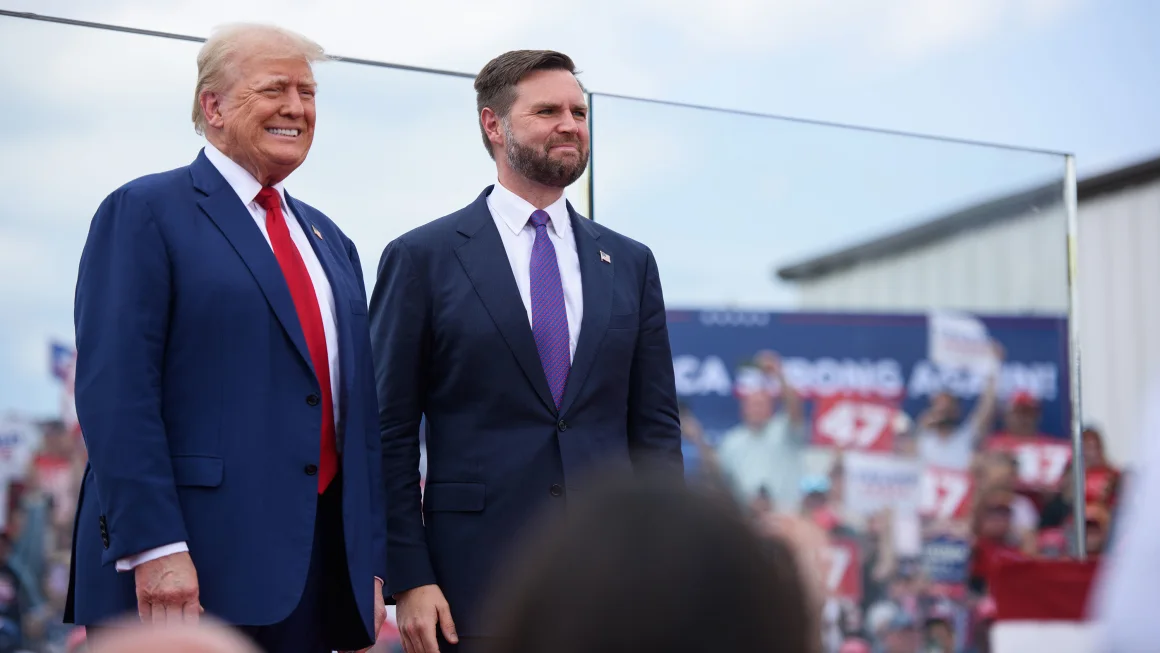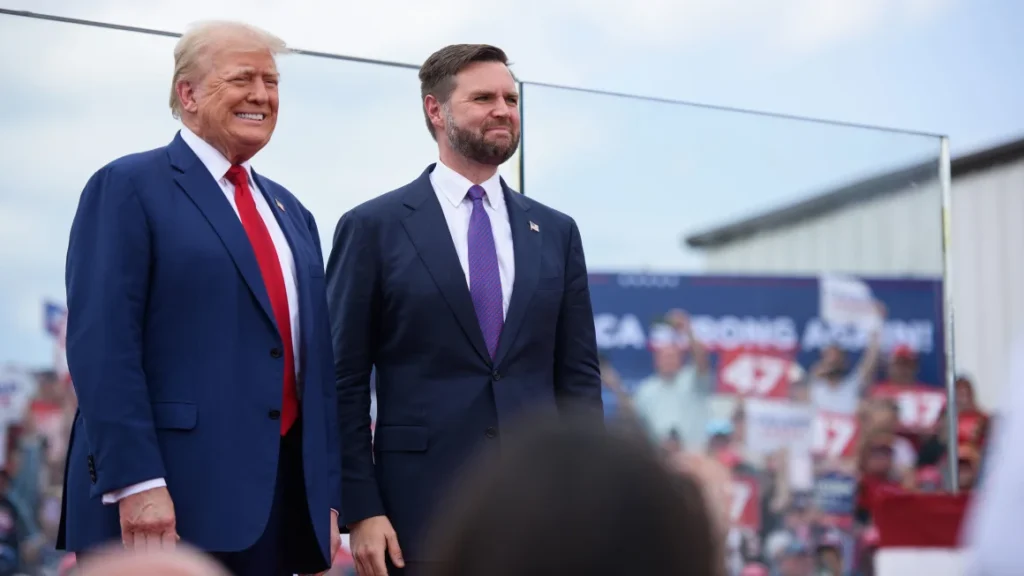
Trump and Vance’s False Claims on Tariffs
Former President Donald Trump and Republican vice-presidential nominee, Senator JD Vance, have continued to misrepresent how their proposed tariffs would function. Both politicians claim that foreign countries, like China, would bear the costs of these tariffs, which is not accurate. In reality, tariffs are a form of taxation on U.S. importers.
Trump’s Misleading Tariff Statements

During a rally in Arizona in mid-August, Trump falsely accused Vice President Kamala Harris of lying by calling his proposed tariff plan a “Trump tax.” Trump insisted, “She is a liar. She makes up crap … I am going to put tariffs on other countries coming into our country, and that has nothing to do with taxes to us. That is a tax on another country.” He repeated these claims in September during a Fox News interview and again at a rally in Wisconsin, stating that these tariffs would not affect American consumers but rather the foreign countries involved.
Vance’s Claims on Tariffs’ Impact on Prices
Senator Vance also echoed Trump’s misleading narrative. In late August, he stated that Trump’s tariffs led to lower prices for Americans while raising prices for Chinese consumers. However, these claims are not backed by facts.Trump and Vance keep falsely describing how tariffs work
The Truth About Tariffs: Who Pays?
Facts First: Both Trump and Vance’s statements are incorrect. A tariff is a tax on U.S. businesses that import goods from other countries, not a tax on foreign nations. Numerous studies, including from the U.S. International Trade Commission, have shown that the cost of tariffs is largely borne by American consumers and businesses. As U.S. importers pay the tariff, they often pass the cost onto consumers by raising the prices of goods.
Erica York, senior economist at the Tax Foundation, explains, “It’s fair to call a tariff a tax because that’s exactly what it is. It’s a tax on people who buy things from foreign businesses.”
If re-elected, Trump has proposed tariffs of up to 20% on all foreign imports, including up to 60% on Chinese goods, and even a 100% tariff on countries moving away from using the U.S. dollar. These tariffs would impact a wide range of products, from steel and aluminum to everyday items like TVs, sneakers, and bicycles.
Impact of Tariffs on the U.S. Economy
While Trump has claimed that foreign companies would absorb the tariff costs, studies have consistently shown the opposite. Americans have paid over $242 billion in tariffs, according to U.S. Customs and Border Protection, resulting in higher costs for everyday goods.
For instance, Deer Stags, an American shoe company that imports goods from China, had to raise prices on new styles to cover the costs of tariffs, while eating the costs on existing styles.
Price Increases Due to Tariffs
Tariffs are designed to raise the price of foreign-made goods to make domestic products more competitive. A 2019 study found that tariffs on washing machines led to price hikes of around 12%, costing U.S. consumers over $1.5 billion in a single year. A follow-up study by the U.S. International Trade Commission confirmed that both imported and domestically-made washing machines saw price increases after tariffs were imposed.
While some American industries, like steel, benefited from the tariffs with job creation, other sectors, especially agriculture, faced retaliatory tariffs from other countries, leading to job losses.

A report that Trump was required to submit to Congress in 2018 regarding the tariffs on washing machines indicated that the tariffs would encourage importers to raise their prices. These tariffs were introduced in response to Whirlpool’s complaint that washing machines from South Korea and Mexico were being sold in the U.S. at prices below production costs.
When asked to provide evidence that Trump’s proposed tariffs wouldn’t lead to price increases, his campaign referred CNN to a study by Jeff Ferry, an economist with the Coalition for a Prosperous America, a group that supports U.S. producers and manufacturers.
However, Ferry’s study concluded that prices would likely rise by 3.26% over a six-year period following the implementation of broad tariffs, marking a one-time price hike.
Ferry’s analysis factored in the effect of the tariffs in combination with tax cuts funded by the resulting tariff revenue. According to his study, Americans could expect lower taxes and higher incomes despite the rise in prices.
Ferry explained to CNN that the traditional economic models used by many economists often underestimate the potential benefits, such as increased domestic production and job creation, and that he adjusted his model to reflect these positives.
While it is true that Trump’s tariffs on foreign-made steel led to the reopening of some American steel mills and the creation of jobs, several studies, including those from the Tax Foundation and the U.S.-China Business Council, found that the overall impact of Trump’s tariffs, along with retaliatory tariffs from other countries, resulted in net job losses for the U.S. economy.
[mc4wp_form id=806]









